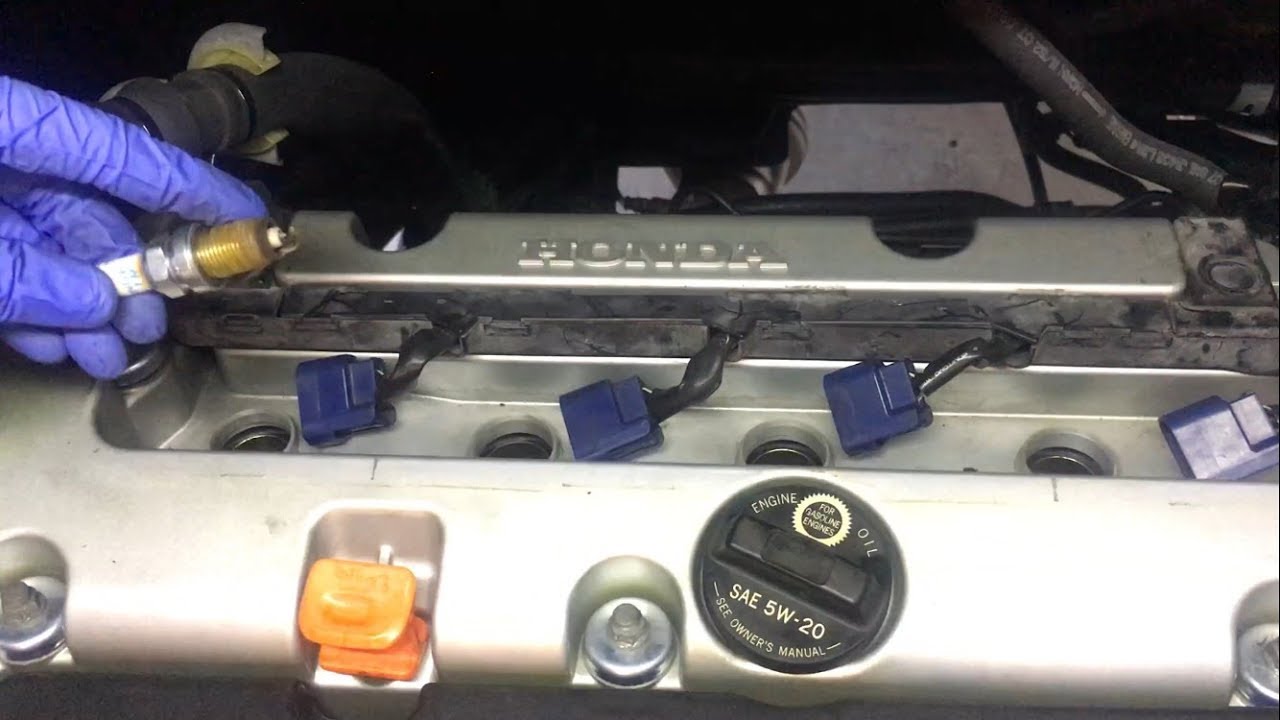2018 Honda Crv Spark Plug Change Interval

The 2018 Honda CR-V, a popular choice for families and individuals alike, relies on a precisely timed ignition system to deliver optimal performance and fuel efficiency. A crucial component of this system is the spark plug. Understanding the recommended spark plug change interval for this model, along with the engineering choices behind it, is vital for automotive professionals.
Recommended Interval and Technical Specifications
Honda typically recommends replacing the spark plugs in the 2018 CR-V every 105,000 miles or 7 years, whichever comes first. This interval is based on the factory-installed spark plugs, which are typically iridium-tipped. Iridium spark plugs are known for their durability and long lifespan compared to traditional copper or platinum plugs.
The 2018 CR-V offers two engine options: a 2.4-liter naturally aspirated inline-four and a 1.5-liter turbocharged inline-four. While the recommended interval remains the same for both engines, the specific spark plug part number may differ. It is crucial to consult the vehicle's owner's manual or a reliable parts catalog (like Honda's official parts website) to ensure the correct spark plug is used. Typically, the spark plugs will have a 12mm thread, require a 5/8" socket for removal and installation and feature a projected tip design. The gap is usually pre-set from the manufacturer but *must* be verified with a feeler gauge before installation to ensure it matches the factory specification, typically around 0.044 inches, but again, verify with the vehicle specification.
Engineering Choices and Real-World Performance
The choice of iridium spark plugs in the 2018 CR-V reflects Honda's commitment to reliability and extended service intervals. Iridium is a highly durable metal, allowing the spark plug electrodes to maintain their shape and effectiveness for a longer period. This translates to consistent ignition performance, reduced misfires, and optimized fuel economy throughout the recommended service life.
In real-world conditions, neglecting the spark plug replacement can lead to several issues. These include:
- Reduced fuel economy: Worn spark plugs require more energy to create a spark, leading to increased fuel consumption.
- Misfires: A weak or inconsistent spark can cause misfires, resulting in rough idling, hesitation during acceleration, and potential damage to the catalytic converter.
- Reduced engine power: Misfires and inefficient combustion lead to a noticeable decrease in engine performance.
- Difficulty starting: Worn spark plugs can make it harder to start the engine, especially in cold weather.
- Check engine light: Misfires can trigger the check engine light, requiring diagnostic work to identify the problem.
Comparison with Alternatives
While iridium spark plugs are the OEM (Original Equipment Manufacturer) choice and the most highly recommended, alternative spark plug types are available. These include:
- Platinum spark plugs: Platinum plugs offer better performance and longevity than copper plugs but are not as durable as iridium plugs. They are generally less expensive than iridium options.
- Copper spark plugs: Copper plugs provide excellent conductivity but have a shorter lifespan. They are typically used in older vehicles or performance applications where frequent replacement is acceptable. They are not recommended for the 2018 CR-V due to their short lifespan and the potential for frequent maintenance.
Pros and Cons:
| Spark Plug Type | Pros | Cons |
|---|---|---|
| Iridium | Longest lifespan, superior performance, excellent fuel economy. | Highest cost. |
| Platinum | Good performance, longer lifespan than copper, moderate cost. | Shorter lifespan than iridium. |
| Copper | Excellent conductivity, lowest cost. | Shortest lifespan, requires frequent replacement. |
Reliability Aspects and Maintenance Tips
Using the correct spark plug type and adhering to the recommended replacement interval are crucial for maintaining the reliability of the 2018 CR-V's ignition system. Furthermore, proper installation is essential. Over-tightening or cross-threading spark plugs can damage the cylinder head. It is highly recommended to use a torque wrench and follow the manufacturer's specified torque settings during installation. Applying a small amount of anti-seize compound to the spark plug threads can also prevent them from seizing in the cylinder head.
Regular inspection of the spark plugs can provide valuable insights into the engine's health. Signs of oil fouling, carbon buildup, or electrode wear can indicate underlying issues such as oil leaks, rich fuel mixtures, or vacuum leaks. Addressing these issues promptly can prevent further damage and maintain optimal engine performance.
Future Trends
The automotive industry is rapidly evolving, with electric vehicles (EVs) and hybrid vehicles gaining increasing popularity. While the 2018 CR-V relies on a traditional internal combustion engine, future iterations may incorporate hybrid powertrains or even transition to fully electric platforms. As a result, the role of spark plugs may diminish in the long term. However, for the foreseeable future, internal combustion engines will remain a significant part of the automotive landscape, and understanding the maintenance requirements of these engines, including spark plug replacement, will continue to be essential for automotive professionals.
Even with advancements in ignition coil technology, the spark plug material research continues to improve upon current designs. Expect to see further development in electrode materials that promote longer life and more efficient combustion in the coming years. Nanomaterials may play a larger role in future spark plug designs.
Conclusion
The 2018 Honda CR-V's spark plug replacement interval is a critical maintenance item that should not be overlooked. By understanding the engineering choices behind the OEM-specified iridium spark plugs and following the recommended service schedule, automotive professionals can help ensure that their customers' vehicles continue to operate reliably and efficiently. While the automotive industry is undergoing a significant transformation, the knowledge and skills required to maintain internal combustion engines will remain valuable for years to come. Staying informed about the latest technologies and best practices is essential for success in this dynamic field.
